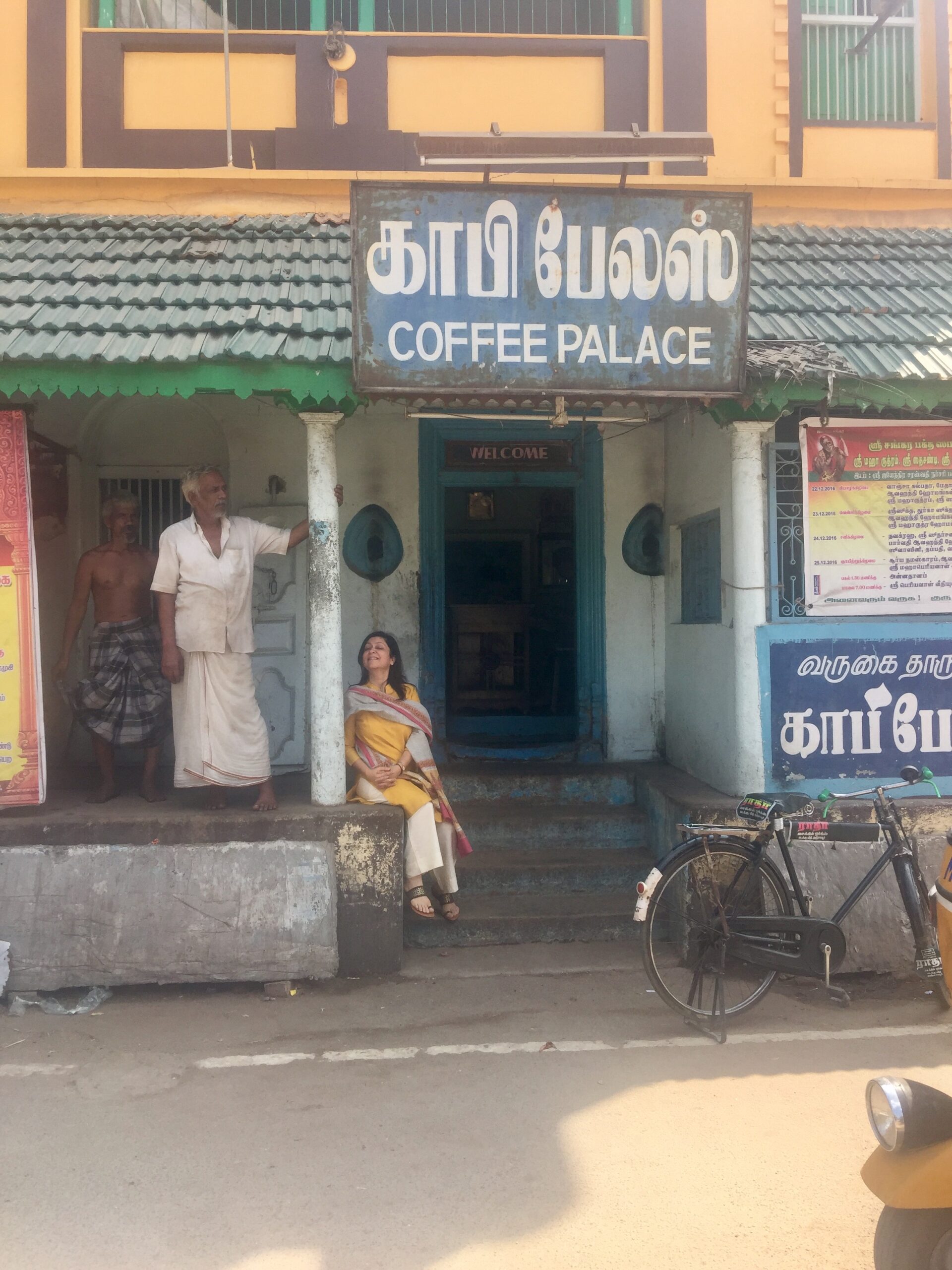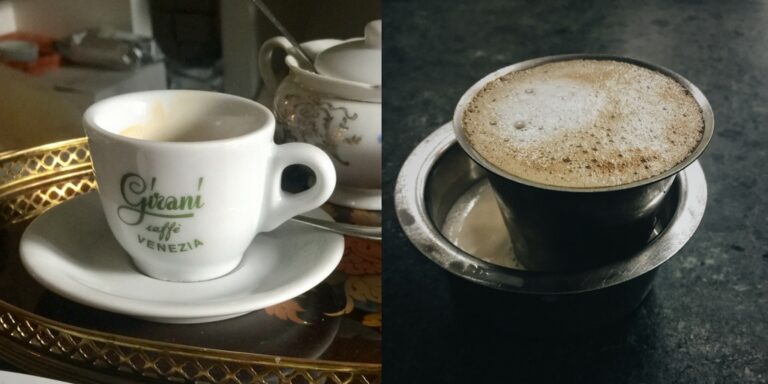Call it a tale of two cities, or a tale of two cups! Like many who love travelling, I form bonds with now-familiar niches all over the world. And between two such niches, I found a particular connection. A connection that smells like heaven and tastes like perfection… Coffee.
Venice, 2016
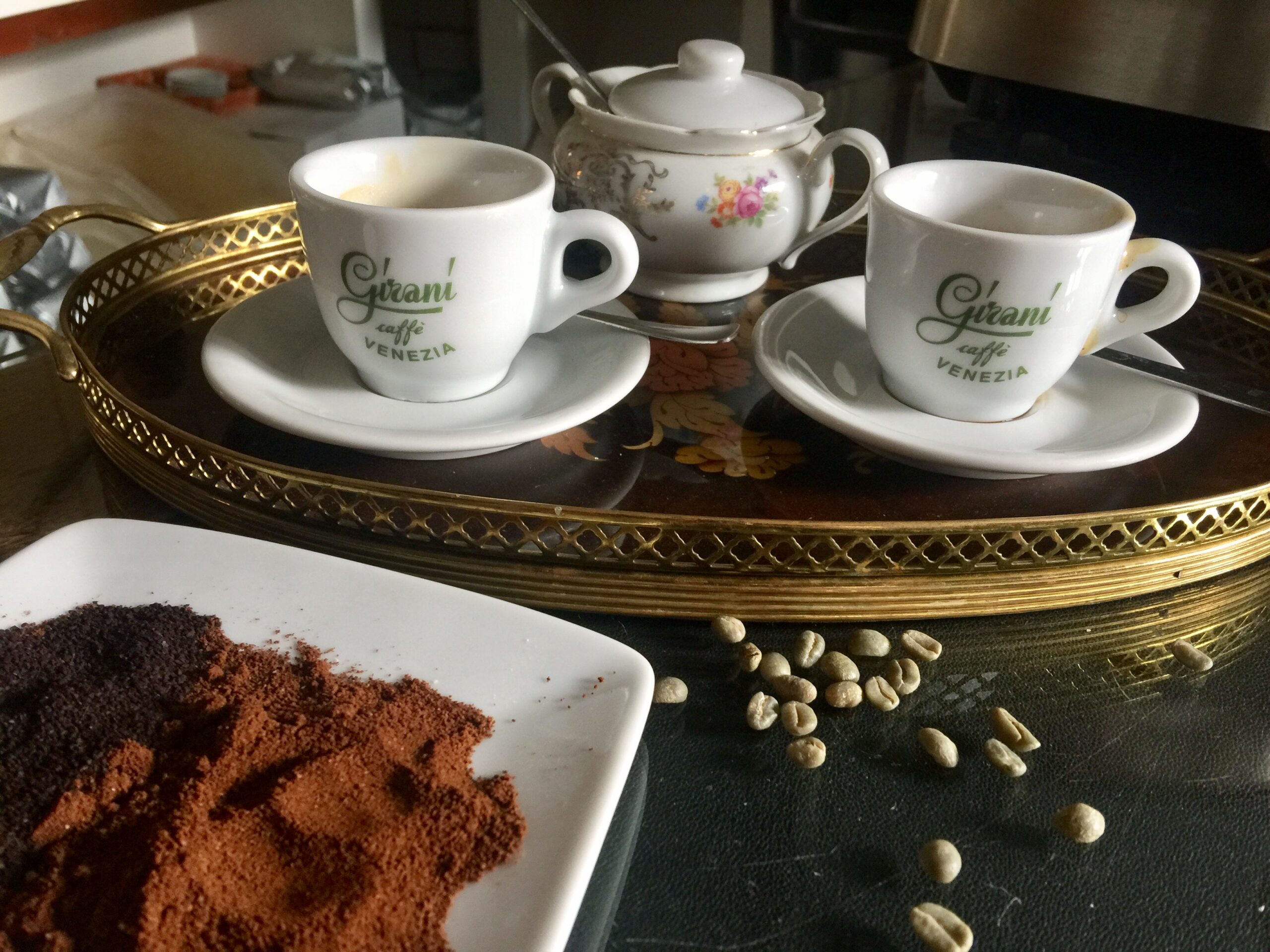
On my last trip to Italy, I veered away from my favourite, Caffé Florian, Venice’s oldest coffee house, in a different direction – and made a wonderful discovery…
Walking one evening in the Castello area, I chanced upon a quaint coffee shop with a board that declared that its timings were between 8am and 12pm. Caffé Girani. Naturally, it was closed, but what I could see of its façade and of its interiors through the windows made me determined to pay a visit. “Very clever timings,” I thought – “A way to avoid tourists!” I was thoroughly intrigued by this non-conformist approach.
Paradoxically, that was what led me, a tourist too, there the following morning. The route at that hour was pleasant, and I enjoyed watching the sun slowly change the colour of the water as the gondolas lingered lazily on the canals. Just as I leisurely ambled along the pedestrian pathway, other early birds were up and about on their first chores of the day.
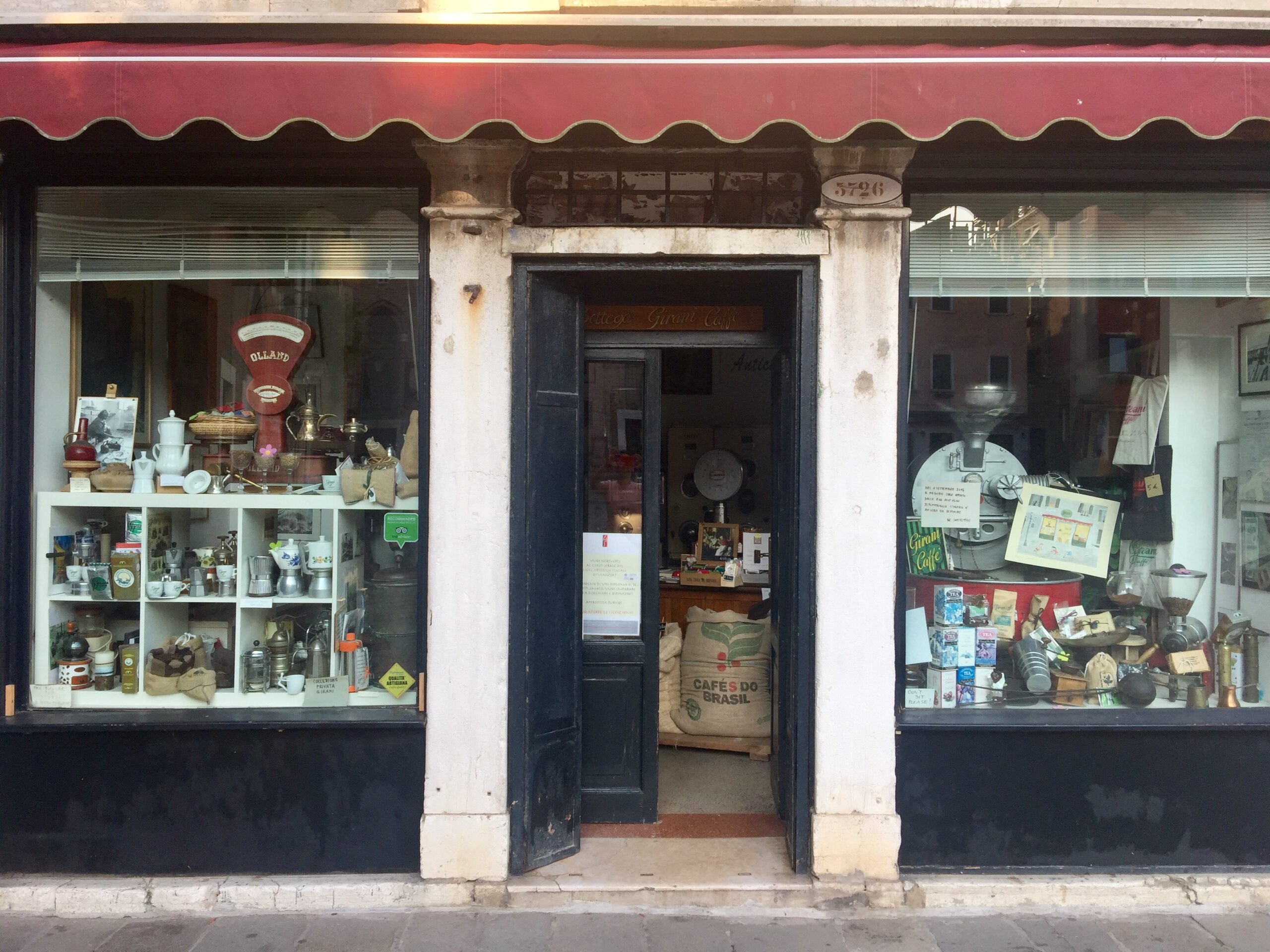
I entered the unassumingly inviting doors, and I found that I had the café to myself – well, almost.
An extremely charming manager, Emmanuelle, was behind the counter – and he greeted me with an irresistible smile. I settled down to order my morning dose of caffeine, enjoying the sight of the antique coffee machines and a beautiful display cabinet featuring all sizes and shapes of coffee makers.
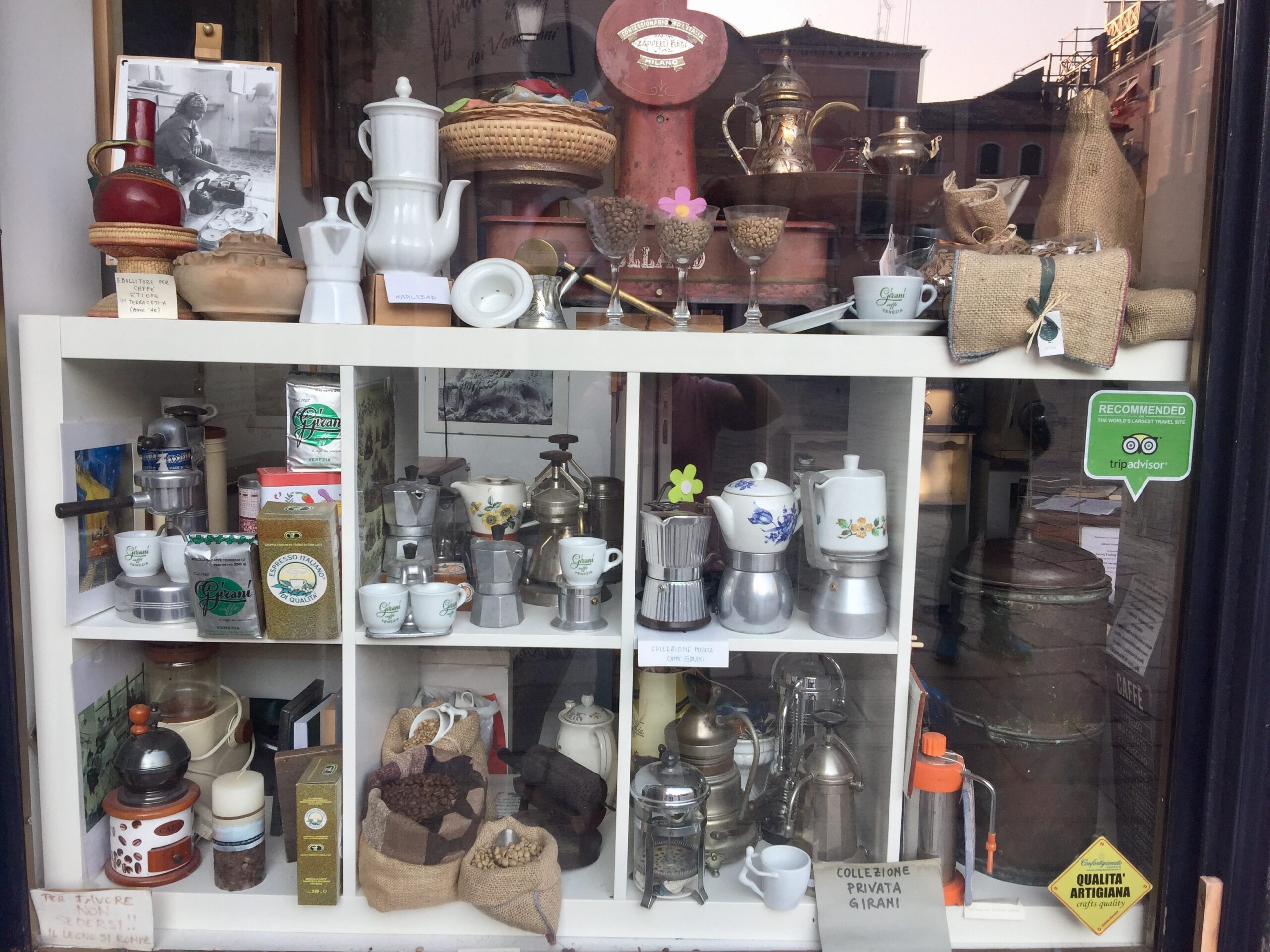
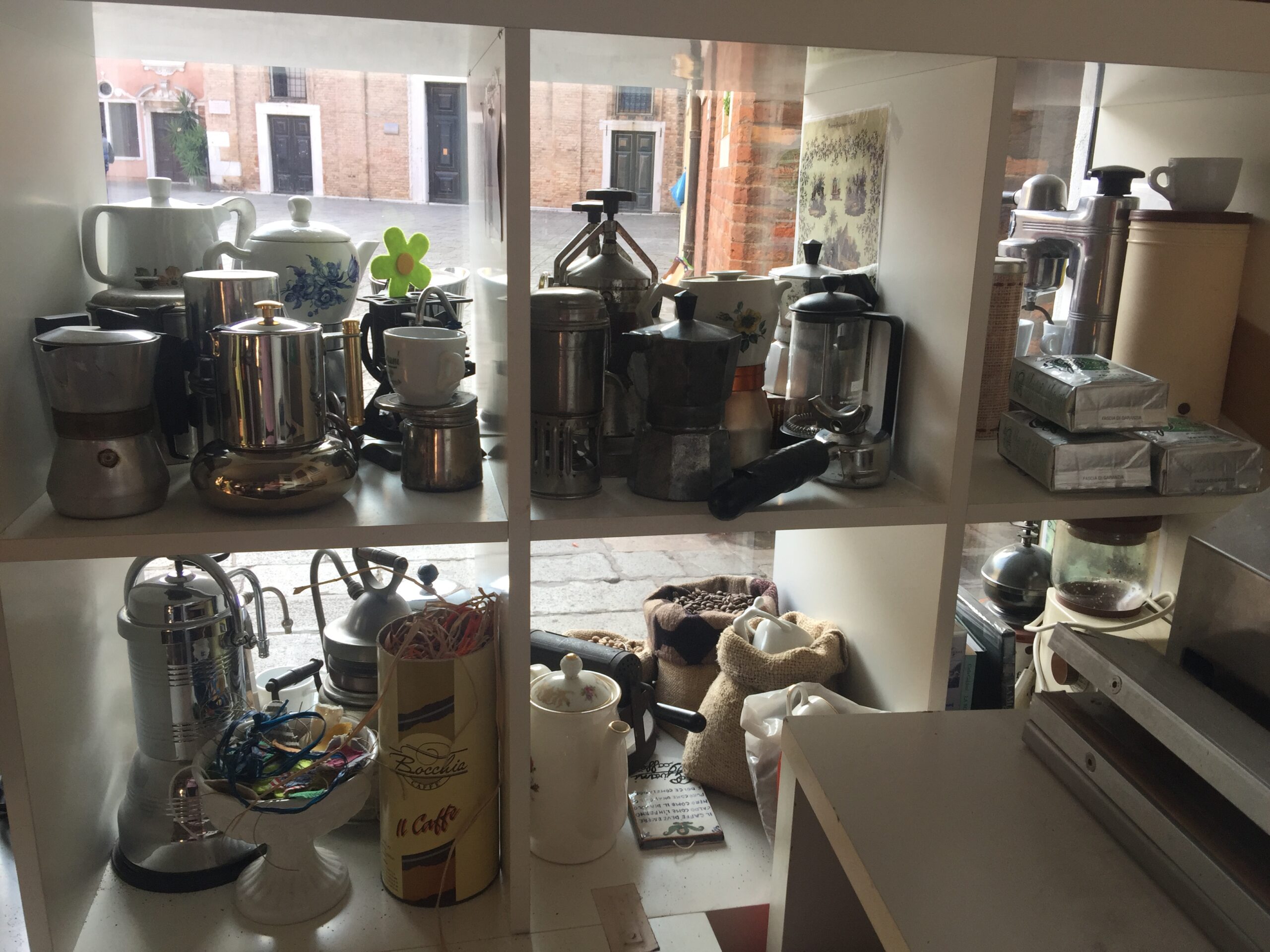
Emmanuelle and I sparked up a conversation, and he told me about Girani’s history. Established in 1928, it is now owned by a 85-year old and run by her daughter; Emmanuelle is the manager who shares a striking resemblance to the café’s founder – and swears they are unrelated!
He turned out to be a connoisseur of the roast, and told me all about this process. Gas-roasted beans taste better. Upon hearing the first crackle is when he turns off the flame, but preferences differ: his German customers enjoy beans roasted until a second crackle. To him, the balance is delicate – roasting too long means that too much oil is released by the bean, which makes it drier and sometimes even rancid with exposure to oxygen. After roasting the coffee beans, he allows them to breathe for 2 or 3 days, during which they develop a distinct character.
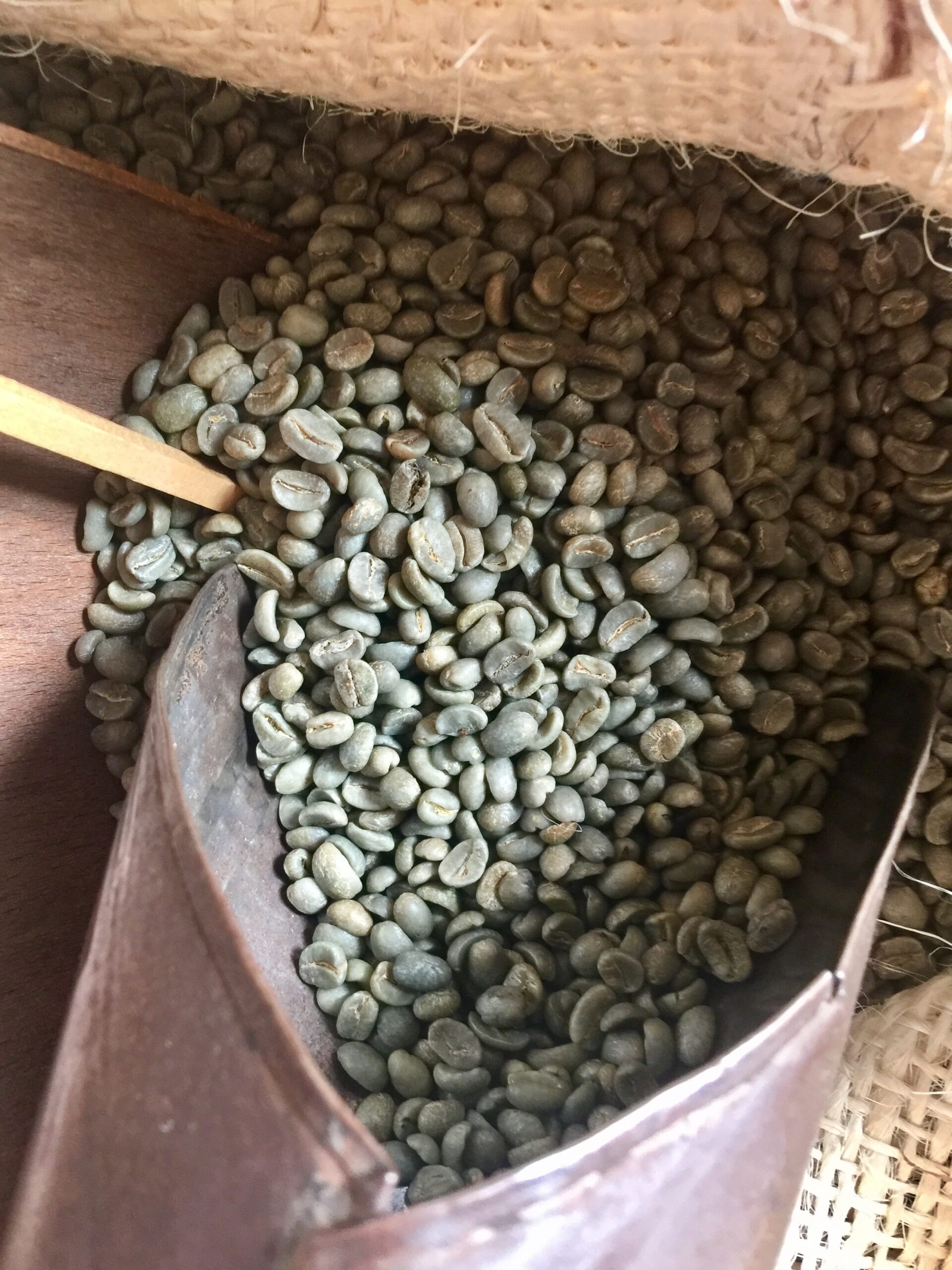
He explained that Girani’s coffee broadly falls into two categories: Robusta and Arabica. Their varieties are sourced from Asia, Africa and other parts of Italy. I was enthralled by the colours of the beans: shades of green, yellow and blue. The Arabica were mostly green or blue, small and oval in shape. The Robusta meanwhile, were rounder. Emmanuelle explained that the latter contains more caffeine because it grows closer to sea level. The caffeine immunises the plant itself against maladies. The Arabica, which grows on hills, has less caffeine.
Soon, Caffé Girani’s regulars started to arrive, including an elderly lady with a dog (which immediately made me miss mine back home). As she waited for her cup, we got to conversing – somehow, between my English and her Italian, we managed to communicate.
I had long gulped down my delicious macchiato by then because I love mine palate-scorchingly hot, which has always gotten me flak from family and friends. But I was vindicated on this trip, for Emmanuelle told me the truth.
According to him, coffee is best served in thick-rimmed ceramic cups which will retain the liquid’s warmth, as it is meant to be drunk hot. He said that most people only sip at their coffee slowly so as to maintain relationships and friendships over caffeinated conversations. This was no surprise to me because I’d noticed it too… whether swallowed quickly or nursed slowly, whether boiling hot, lukewarm or even iced, coffee really does have a way of bringing people together.
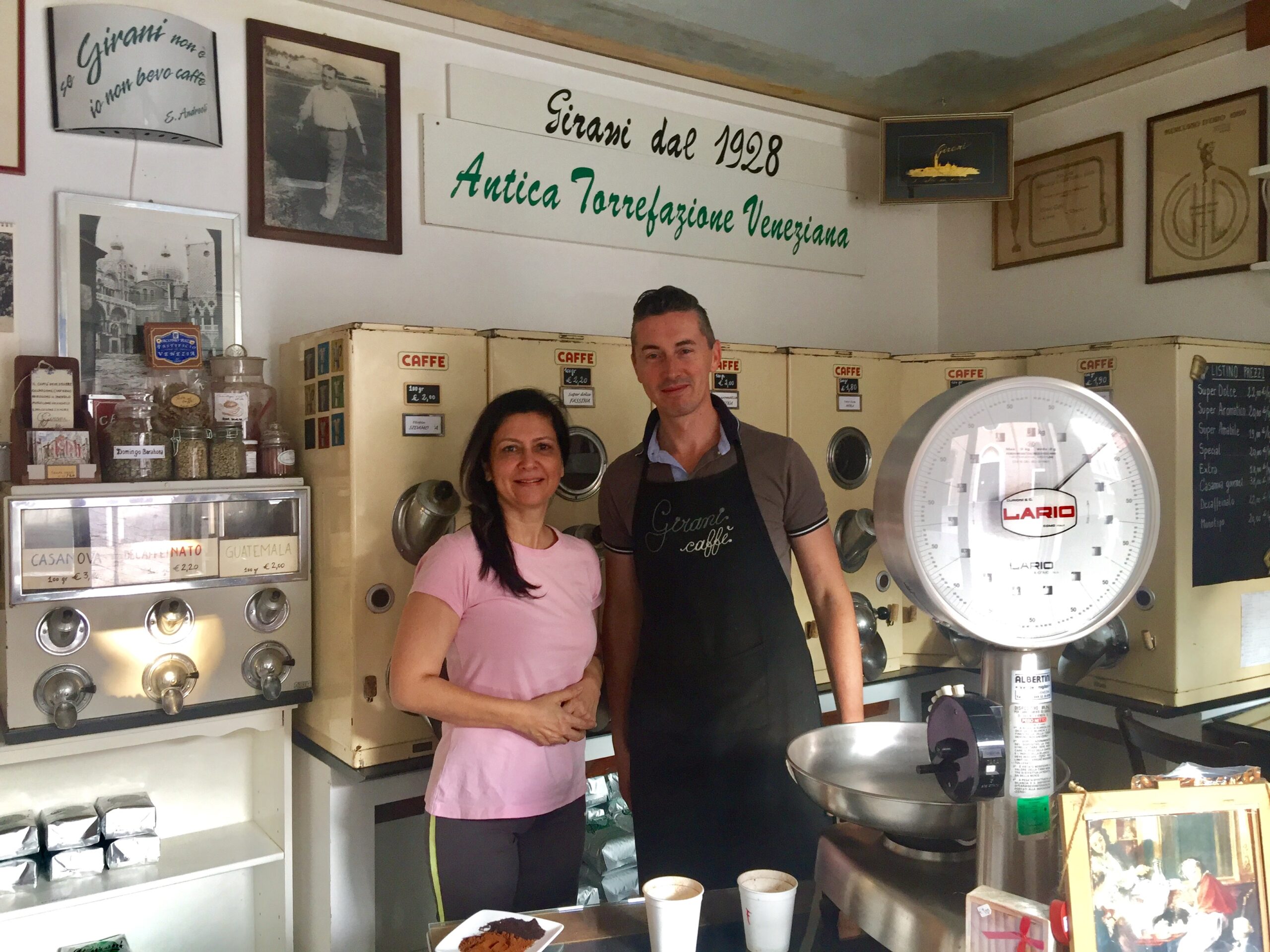
~~~~~~~~~~~
Thanjavur, 2017
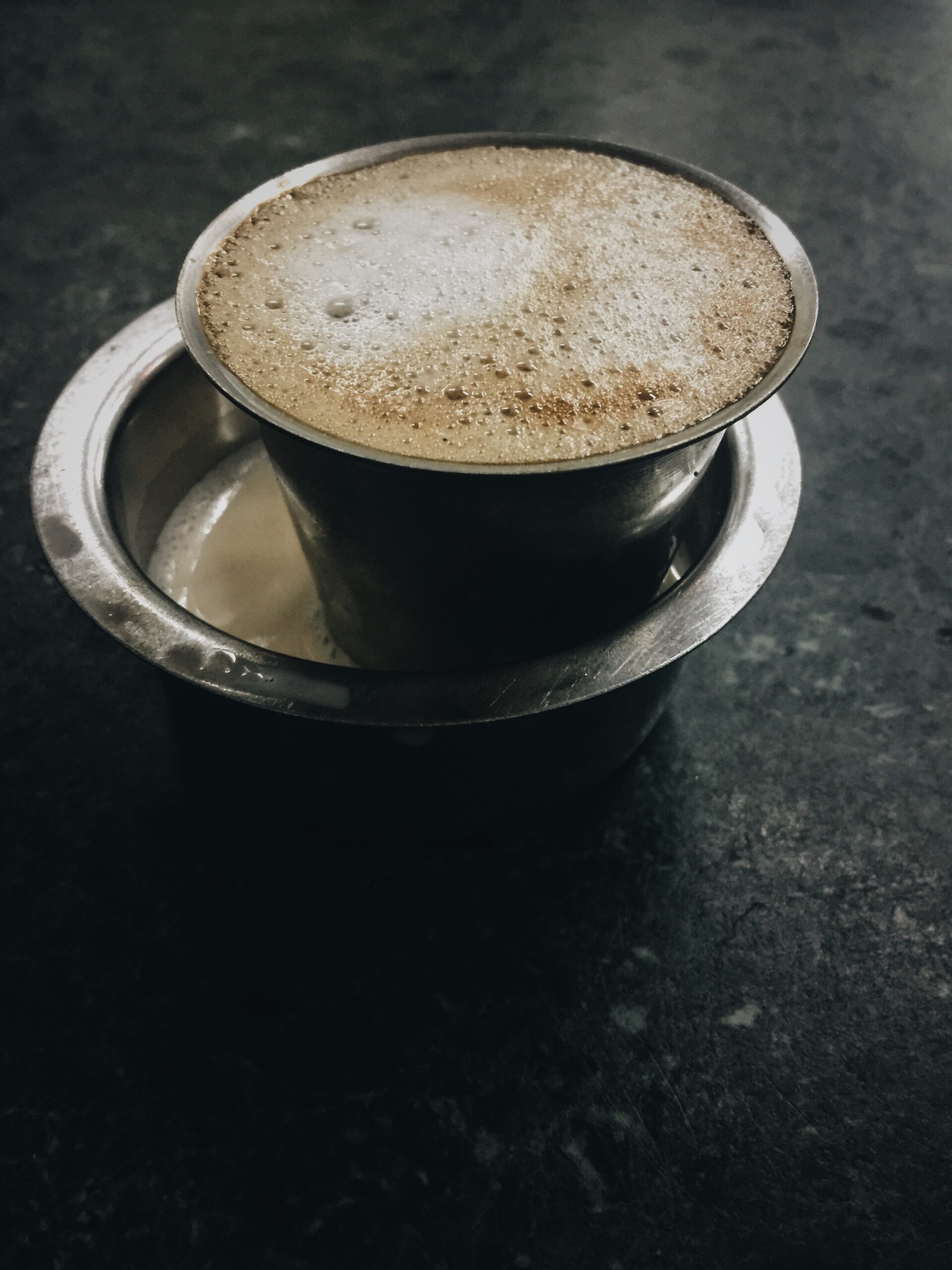
To step into Thanjavur is to experience medieval Tamil Nadu, which thrives in the form of some of the most extraordinary works of art and architecture you may encounter in India – if not the world. From gem-encrusted Tanjore paintings to the soul-stirring ragas of Carnatic music and the astonishing temples of the Chola dynasty that still resound with bells and prayers every day – the city is a cultural feast. It sits at the heart of the rice cultivating district, made fecund by the river Cauvery.
Wherever I go, I am in search of the other kind of feast too. Over a traditional South Indian breakfast one morning, it occurred to me that if this part of the country had a particular culinary claim to fame, it might be coffee. When you think of Tamil Nadu, filter coffee – a concoction made of mixing a ground coffee and chicory decoction with boiled milk, quite different from the cold drip known by the same name in the West – is one of the stereotypes for a good reason.
So I asked a local friend where I would find Thanjavur’s best coffee, and the proud reply came promptly: “My house”. But of course!
And then, after a beat: “The second best would be Coffee Palace.” She had my curiosity on fire when she said, “It’s run by a Gujarati family, too.” As a second-generation Gujarati born and raised in Tamil Nadu, I simply had to check it out!
The entrance of Coffee Palace, like so many old buildings here, features a thinnai or verandah, a traditional element of Tamil architecture. The thinnai was originally a hospitality feature: not only a place to sit (and drink coffee!) on hot afternoons, but also a place for wandering pilgrims and travellers to rest for the night. Inside the building were long tables and a simple, casual atmosphere. The air was the redolent with the scent of – you guessed it!
My friend and I sat down and were served by an aging waiter, Raja, whom we immediately struck up a conversation with. Before he could even take our order, I’d asked if I could meet the management – not for a complaint, but out of sheer cultural and culinary curiosity.
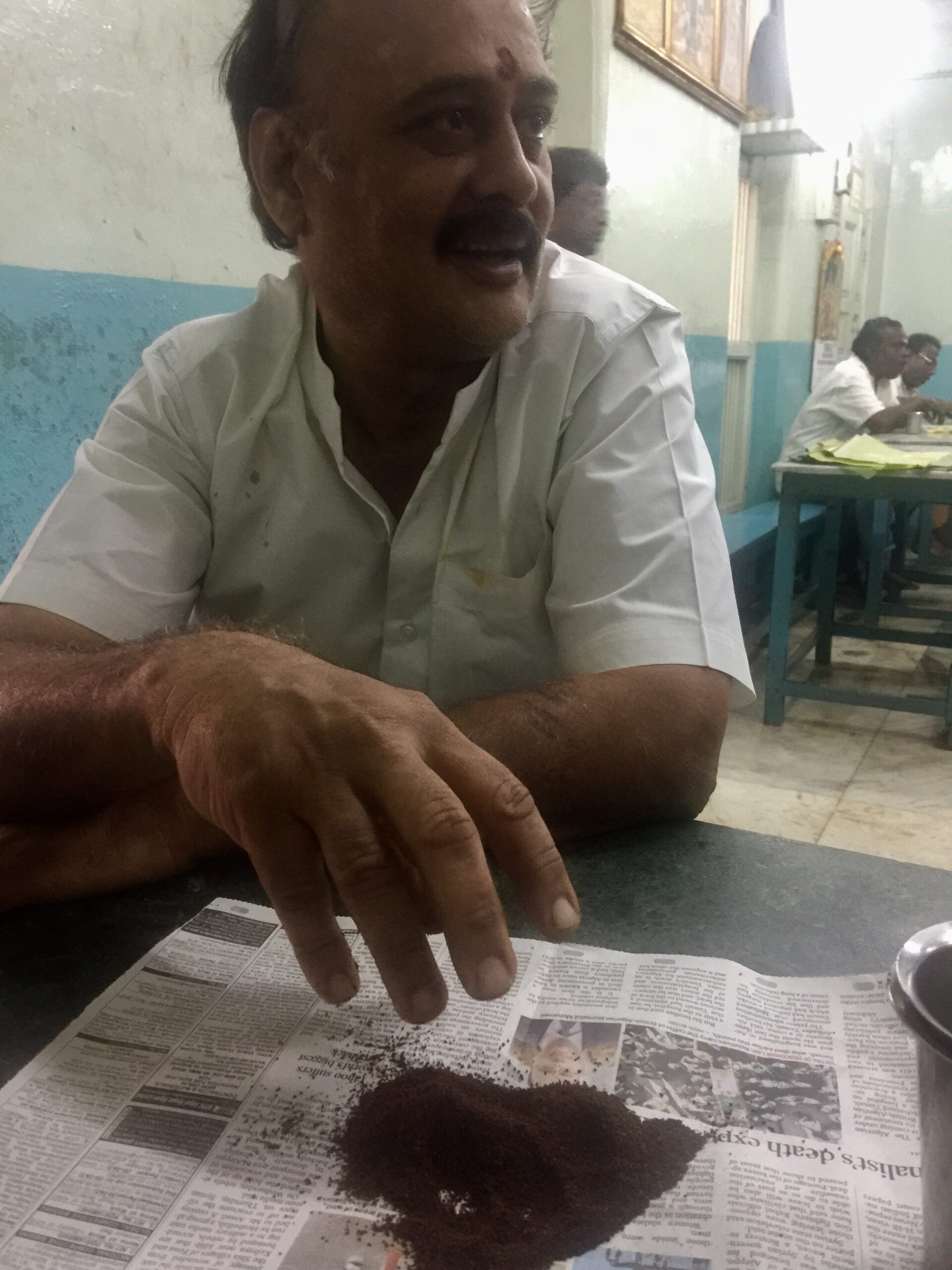
And so I met Chandrashekara Mehta, whose great-grandfather Kumarasamy Mehta had bought the place in 1977 from Venkatachalam Iyer, a Keralite settled in Thanjavur. A family of diamond merchants and jewellers, the first branch was on the bustling Kasi Street and grew to fill a need: there was no coffee shop nearby from which to serve to esteemed customers as they purchased gold, a simple and expected hospitality gesture. Today, Coffee Palace is more than just a café – it is also offers board and lodging in the city’s South Rampart area.
Those of you familiar with India will enjoy my surprise – the Mehta gentlemen have Tamil first names, and a Gujarati surname. The Mehtas speak a musical patois that is partly Tamil and partly Gujarati – being fluent in both languages, it was a marvel to listen to the dialect. Their sung prayers, known as bhajans, are also in both languages.
Mr. Mehta let me in on the secrets of the Coffee Palace cuppa, between 750-1000 of which sell daily at just Rs15 (23 US cents). He says he hasn’t heard of the word “Arabica”, but why should he – it’s enough to know that his beans come from the ancient village of Pattiveeranpatti in the Dindigul district. They are from the smaller seeds that grow at the tops of the trees in Plantation A, where they are exposed to direct sunlight and mist. The lower on a tree that its seeds are, the larger they are – and the weaker their flavour. As with Emmanuelle in Venice, I enjoyed hearing about the differences in how people perceive coffee flavours: ask a different expert, and they may tell you something contradictory.
Coffee Palace’s Plantation A’s strong-flavoured beans are mixed with Robusta A, which is weaker in flavour but more intensely caffeinated. An infusion of peaberry is added for even more flavour, along with 20% chicory for thickness. Chicory is used in coffee particularly as a digestive aid. South Indian coffee is always, always served with boiling hot milk, and Coffee Palace has its own cowshed, where some of theirs is sourced fresh.
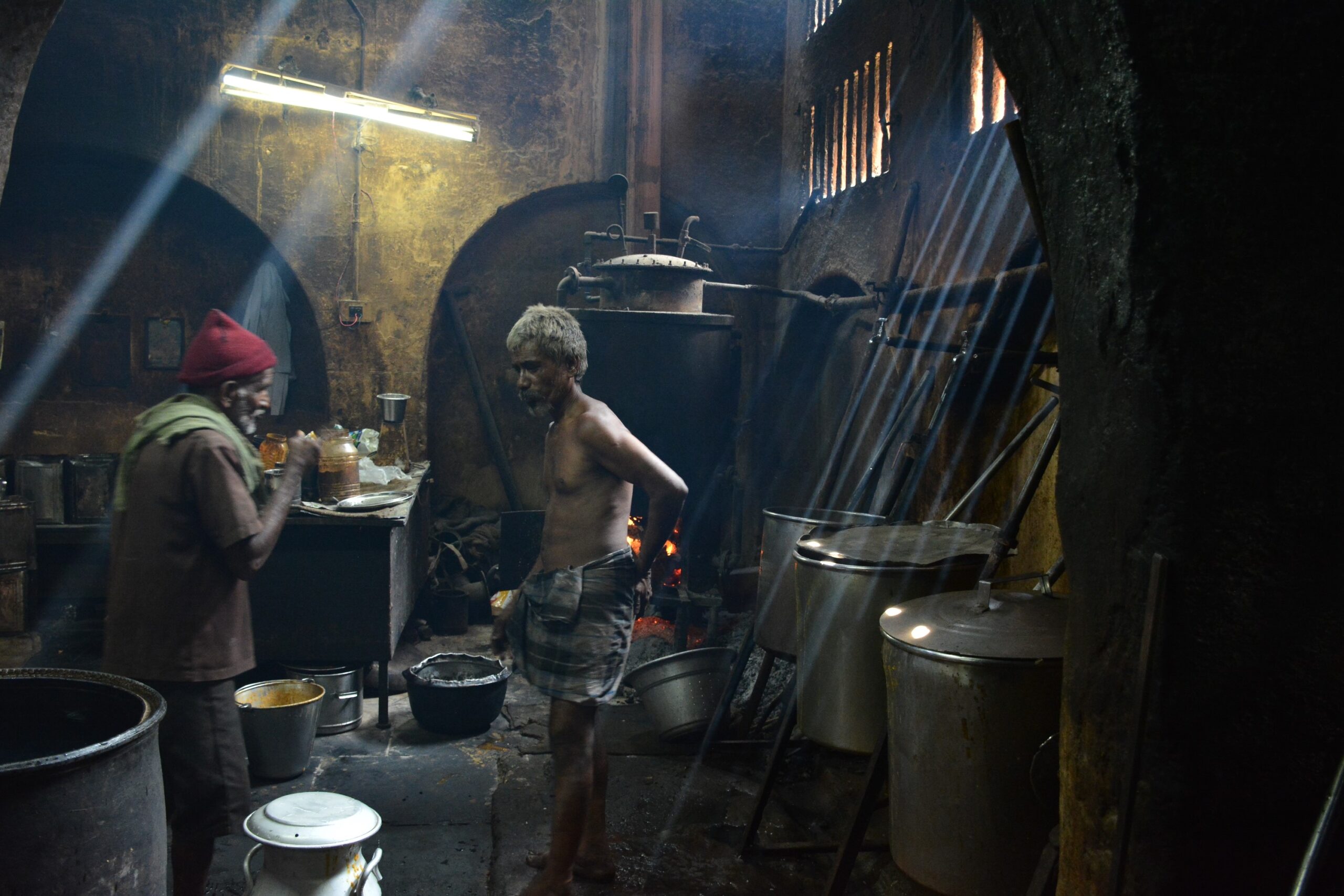
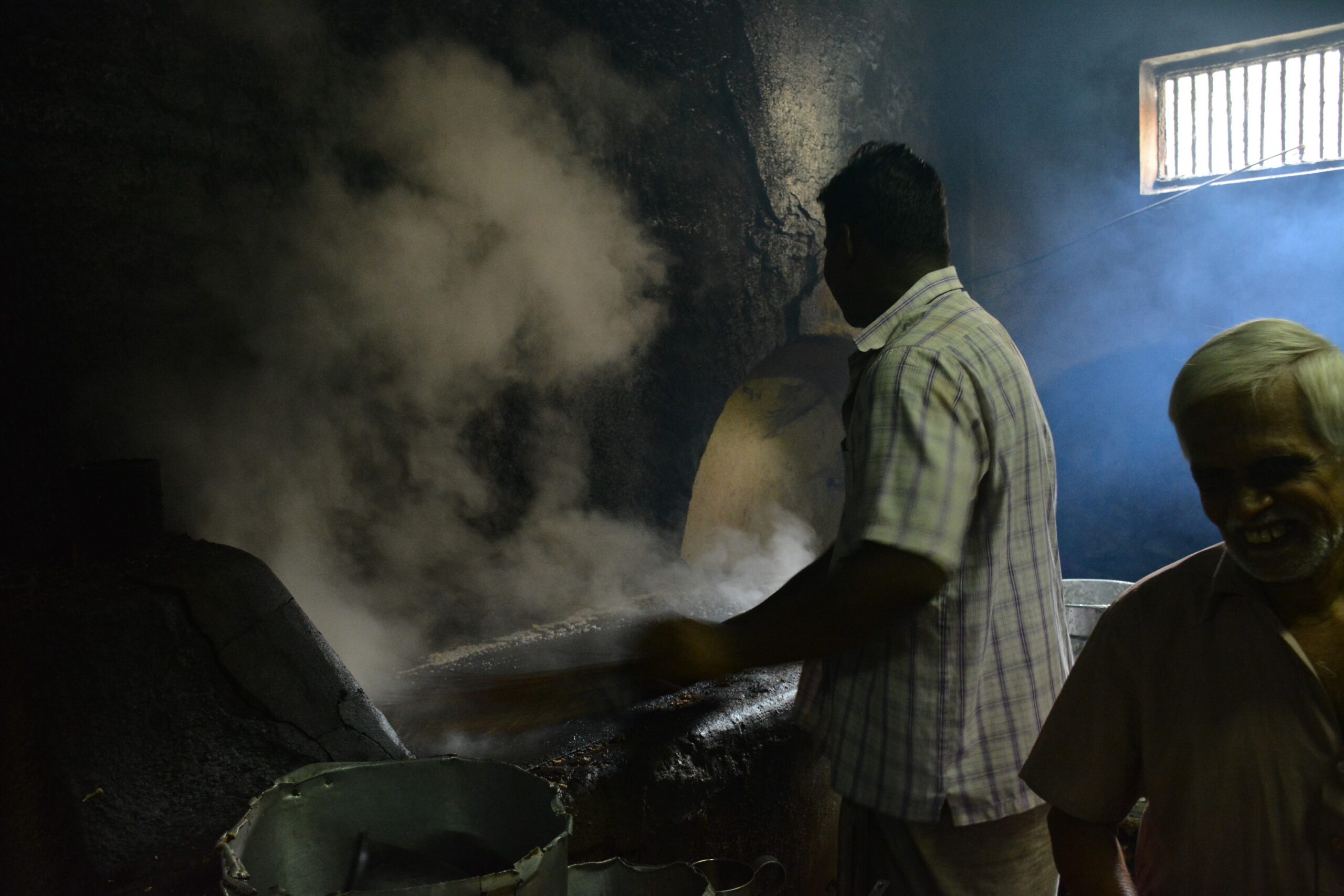
The day I met Mr. Mehta was the same day when restaurants across America were participating in a protest against Trump’s immigrant ban. I was particularly aware of how much richer the world is when it is diverse as I sat there at Coffee Palace, Thanjavur, enjoying piping hot South Indian filter coffee while listening to a Gujarati-Tamil fusion in a café filled with tourists from so many places in the world. How could anyone want it to be any different?
And it’s almost superfluous to say it, but as for Coffee Palace’s famous coffee itself? It was simply sublime.
